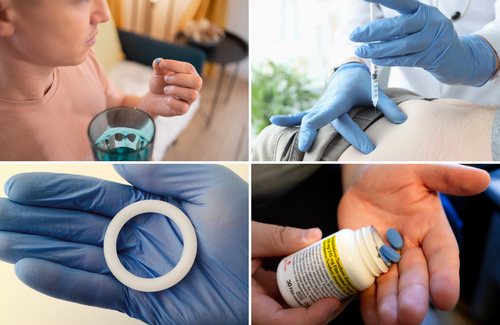
No HIV infections occurred over two years of follow-up among individuals taking event-driven pre-exposure prophylaxis (PrEP) in a demonstration study conducted in Amsterdam, investigators report in The Lancet HIV. The study recruited men who have sex with men (MSM) and transgender individuals who were given the option of taking daily or event-based PrEP. Two HIV infections were documented, both involving individuals who opted for daily PrEP, one of the infections happening after they had stopped PrEP. The sexual risk behaviour of individuals taking daily and event-based PrEP was also found to differ somewhat, indicating a need for tailored sexual health interventions according to PrEP regimen.
“For event-driven PrEP use, the existing evidence is robust, although scarce,” note the authors. “Our results build on previous evidence underscoring the high effectiveness of event-driven PrEP, even when provided according to user preference.”
AMPrEP was a demonstration study designed to gather further information on the incidence of HIV, sexually transmitted infections (STIs) and changes in sexual behaviour among individuals taking PrEP in Amsterdam. Recruitment took place between August 2015 and May 2016. Eligible individuals were adult HIV-negative MSM and transgender persons who reported one or more HIV risk factors in the previous six months: condomless anal sex with a casual partner, diagnosis with an STI, use of post-exposure prophylaxis (PEP), or an HIV-positive partner with a detectable viral load.
We confirm that daily and event-driven PrEP regimens are effective for the prevention of HIV.
Participants were provided with free PrEP (tenofovir/emtricitabine) and were given the choice of taking it daily or event-based (two tablets between 2 to 24 hours before sex, and one tablet every 24 hours, up to 48 hours after last sex).
Every three months, participants attended follow-up appointments at a sexual health clinic when they were tested for HIV and bacterial STIs (chlamydia, gonorrhoea, LGV and syphilis). They were also asked to complete questionnaires regarding the frequency of condomless anal sex, the number of sexual partners (regular and/or casual) and the number of sexual acts.
A total of 367 individuals were included in the investigators’ analysis. Their median age was 40 years and 365 were MSM. All were white and lived in Amsterdam.
The study lasted two years, the participants contributing 497 person years of follow-up on daily PrEP and 177 person years of follow-up on event-based PrEP.
Approximately three-quarters (73%) of individuals opted to take daily PrEP, the others choosing event-based PrEP. Over two-thirds remained on their initial course, while 69 changed regimens once, with 38 switching on multiple occasions. Just over half of these changes (52%) were from daily to event-driven PrEP. Thirteen people discontinued PrEP in the first year, a further seven stopping in year two. However, four of the participants stopping PrEP in the first-year re-started it in year two.
There were two HIV infections (overall incidence, 0.30 per 100-person years), both involving individuals taking daily PrEP. One person had stopped PrEP several months before being infected with HIV. However, the second individual reported consistent daily PrEP use.
In years one and two, 53% and 48% of participants were diagnosed with an STI. Overall STI incidence was 41% lower among individuals taking event-based, compared to daily PrEP (aIRR 0.59; 95% CI, 0.46-0.75, p < 0.001). The incidence of any anal STI, any chlamydia (especially anal), and gonorrhoea at any site was significantly lower among those taking event-based compared to daily PrEP.
The median number of casual sexual partners per three months remained stable over the study (year one = 11; year two = 10), as did the median number of sex acts per three months (year one = 20; year two = 18). The median number of condomless anal sex acts was 10 per three-month period in both years.
There was a modest but significant increase over time in the number of condomless anal sex acts with casual partners (adjusted relative ratio, 1.05; 95% CI, 1.02-1.09, p = 0.0016).
“Condoms are the mainstay of effective STI protection. However, an important reason for initiating PrEP is because an individual has decreased willingness to use condoms,” observe the authors. “The decrease in condom use over time that we observed might reflect participants’ increasing confidence in the effectiveness of PrEP.”
Among daily PrEP users, the number of condomless anal sex acts with casual partners increased significantly, but the number of partners and the number of sex acts overall did not change.
Analysis of individuals taking event-based PrEP showed that the number of condomless anal sex acts with casual partners did not change, with the number of partners decreasing and the number of sex acts remaining stable.
Overall, the median number of partners, sex acts, and condomless anal sex acts with casual partners were all significantly higher among individuals taking daily as opposed to event-based PrEP.
“We confirm that daily and event-driven PrEP regimens are effective for the prevention of HIV,” conclude the investigators. “Regular HIV and STI testing remain of great importance among MSM using PrEP. Frequency of STI testing, and behavioural and other STI prevention interventions might be tailored specific to sexual behaviour. These public health strategies need to be considered by both clinicians and policy makers.”
Hoornenborg E et al. Sexual behaviour and incidence of HIV and sexually transmitted infections among men who have sex with men using daily and event-driven pre-exposure prophylaxis in AMPrEP: 2 year results from a demonstration study. Lancet HIV, http://dx.doi.org/10.1016/s2352-3018(19)30136-5.

